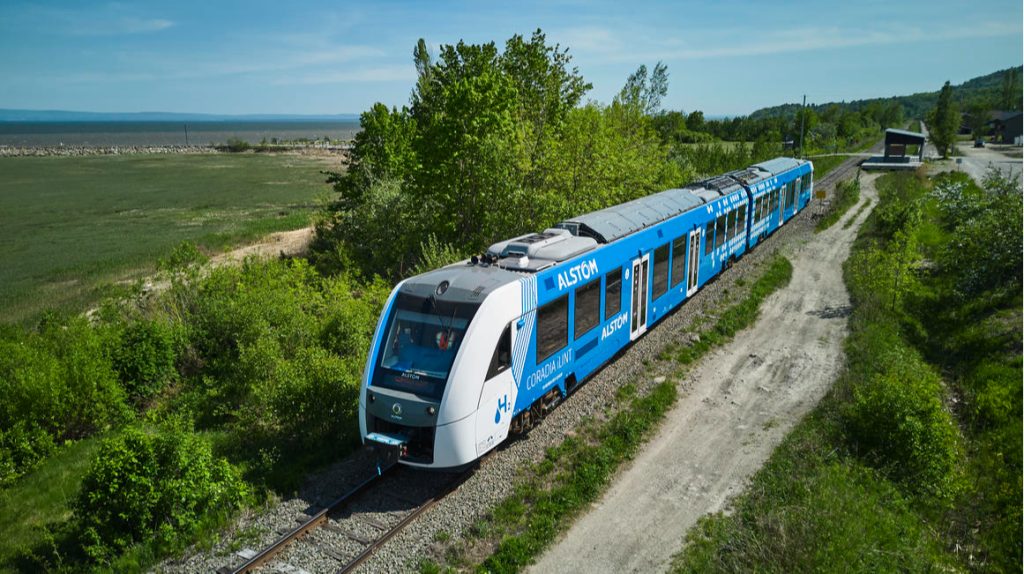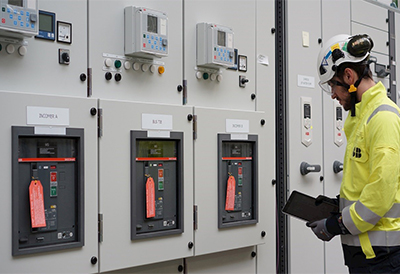Alstom Concludes the Successful Demonstration of the First Commercial Service Hydrogen-Powered Train in North America
October 12, 2023

- Alstom’s Coradia iLint hydrogen-powered train transported more than 10,000 passengers in a demonstration project in Quebec from mid-June to the end of September 2023
- Using Alstom’s green hydrogen-powered train on this route helped save approximately 8,400 litres of diesel and averted 22 tons of CO2 emissions during this pilot
- Alstom and its partners have laid the foundation of a comprehensive, safe and efficient H2 ecosystem for the heavy transportation sector in North America, from production to refuelling to operation
- Alstom and its partners will use the results to chart the next steps to develop hydrogen propulsion technology and foster the adoption of green transportation in North America
Alstom has announced the first results of North America’s first demonstration of hydrogen-powered trains. The Coradia iLint carried more than 10,000 passengers, over 130 trips spanning 10,660 kilometres in Quebec this summer from mid-June to the end of September. The demonstration saved our railway partner an estimated 8,400 litres of diesel and averted 22 tons of CO2 emissions compared to the diesel trains that normally service this route [1]. Moreover, Alstom and its partners welcomed 34 commercial, governmental and regulatory delegations from all over North America looking to witness this hydrogen-propulsion technology and capture the requirements for wider implementation across North America.
“This summer, we demonstrated that hydrogen trains can be an attractive, safe and viable alternative to diesel on non-electrified lines and that we can do it right here in North America,” said Michael Keroullé, President of Alstom in the Americas. “Alstom has clearly taken the lead in supporting rail operators and authorities in their environmental transformation, thanks to its unmatched portfolio of green solutions and its ability to bring together the best players in the industry.”
Michael Keroullé, President of Alstom in the Americas
Only 1% of the North American rail network is electrified today. To decarbonize the rail sector in time to meet national, provincial and state-level climate goals, there must be significant investments in track electrification along with the adoption of alternative green traction solutions, including battery-powered and hydrogen-powered trains. Alstom conducted this first-time-in-America demonstration as a proof of concept in real operating conditions for hydrogen trains, which bring multiple benefits, including no carbon emissions from the propulsion system, quieter operations, and a greater operational autonomy before refuelling than battery-powered trains.
There have been several takeaways from this demonstration:
- Hydrogen-powered trains are safe and reliable – if a robust hydrogen ecosystem is available to provide fuel.
- Hydrogen-powered mobility requires an agile and reliable hydrogen fuel production and distribution system. North America is taking the first steps towards building this kind of hydrogen ecosystem. Continued investment and commitment will be needed to scale.
- To unlock the benefits of hydrogen-powered trains, North American decision-makers will need to adapt regulatory standards that were created before hydrogen was conceived for this purpose.
- As this ecosystem matures, it will create new jobs requiring new skillsets around the operation and maintenance of a hydrogen fuel network, hydrogen-powered traction systems and hydrogen fuel cells.
Alstom is partnering with the Hydrogen Research Institute of the Université du Québec à Trois-Rivières to analyse the results of the demonstration project and will issue a final report for public authorities in early 2024.
The demonstration project was made possible thanks to a partnership between Alstom, which supplied and maintained the trains, Train de Charlevoix/Réseau Charlevoix who made their teams and tracks available, Harnois Énergies, which provided the right amount of green hydrogen at the expected pressure, HTEC, which implemented the mobile hydrogen charging solution and Accelera by Cummins, which supplied and maintained the fuel cell during the pilot. The project was also authorised and supported by the Government of Quebec.
Alstom’s Coradia iLint is the world’s first hydrogen passenger train. It has travelled more than 220,000 kilometres in eight European countries since it started commercial service in 2018. The train is powered by a hydrogen fuel cell that emits only water during operation while ensuring a quieter environment for passengers and those close to tracks. With the demonstration project in Quebec, the hydrogen train proves that it is a viable alternative to diesel on non-electrified lines with low density over long distances for clean, safe and sustainable operation.
Notes
[1] First estimate based on an internal study showing emissions typically emitted by a diesel train over a similar distance.
Alstom™, Coradia™ and Coradia iLint™ are protected trademarks of the Alstom Group.
Related Story
ABB: FLIRTing With the Future of Rail
According to EPA estimates, 29% of all CO2 emissions come from transportation, the largest share of any sector of the economy. It’s not surprising then that the industry has been in the spotlight as suppliers, operators and governments seek to improve efficiency and cut emissions. Rail travel has long been one of the most—if not the most—energy-efficient methods for moving people and things, but while municipal rail transit systems make use of electric drive systems, long-haul trains are another story.








